Common Grounds
Our Friday News Analysis | What the World Reads Now!
Traversing Through Smoke and Mirrors
The Hague, The Netherlands 08 March 2024 | If you know of any story that is decisive, tell the world. We're still searching.
'NETANYAHU WANTS THE WORLD TO ACCUSE ISRAEL OF GENOCIDE, APARTHEID AND ETHNIC CLEANSING'
"Once, not long ago, a leader with great potential and power faced a choice—bravely stake your legacy to a vision of a historic and just peace, or contort and sacrifice your country for the sake of your political longevity. He chose. Israel lost. End of story."
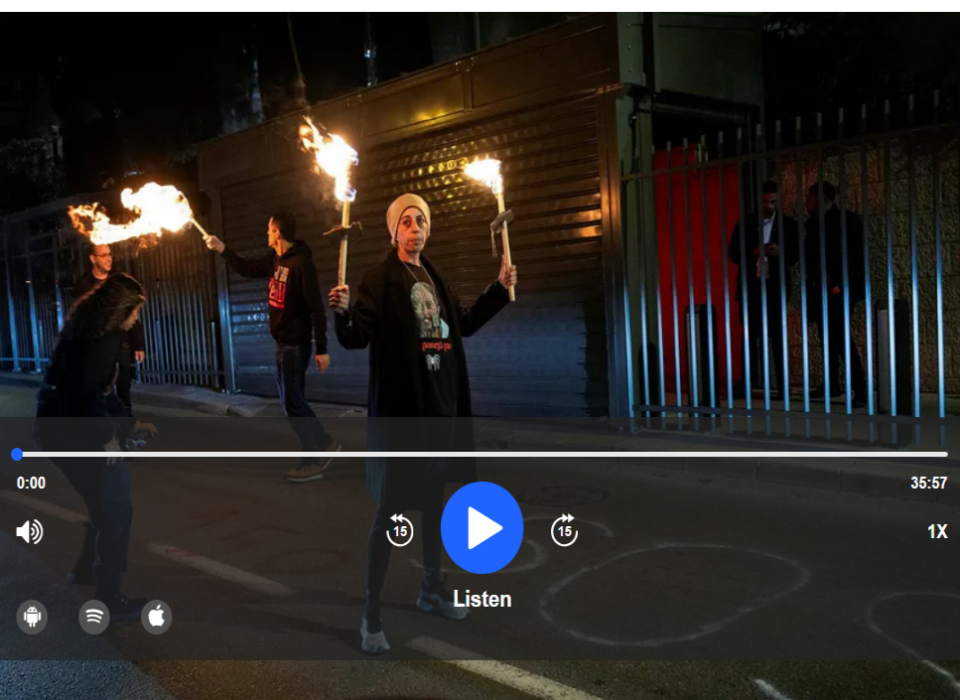
A demonstration by the families of Israeli hostages outside Prime Minister Benjamin Netanyahu's residence in Jerusalem.Credit: Noam Revkin-Fenton
Click here to listen the podcast (35:57)
Haaretz Podcast Host Allison Kaplan Sommer
Haaretz Israel
5 March 2024
Veteran Haaretz columnist Bradley Burston opens his new book "The End of Israel: Dispatches from a Path to Catastrophe" with this stinging indictment of Prime Minister Benjamin Netanyahu, who he believes is leading the country towards what could be its final chapter.
He tells Haaretz Podcast host Allison Kaplan Sommer that in recent years, when the country was embroiled in the battle over Netanyahu's judicial overhaul, "it was clear to me already that the Israel that we all once knew was not going to return and that something huge had already happened, some enormous abyss had already opened that would make it impossible for that Israel... to continue."
Prime Minister Benjamin Netanyahu sits in the Knesset with Arye Dery, Yariv Levin, Idit Silman, and Itamar Ben-Gvir. Credit: Olivier Fitoussi
Burston's book is a collection of his columns that appeared in Haaretz over the past 20 years. Its title draws from the decline of the country he fell in love with. "What's left of this country that was supposed to serve goals outlined in the Declaration of Independence, which the present government and its legislation have now negated?" he asks.
Calling the Gaza war a "man-made natural disaster," Burston asserts that Netanyahu has a vested interest in endless conflict and instability. "He wants the world to accuse Israel of genocide and apartheid, violent occupation and ethnic cleansing" so that Israelis believe "the world hates us, and he is the only one who can save them."
Also on the podcast, Haaretz Washington correspondent Ben Samuels provides an update on National Unity Party Benny Gantz's visit to Washington and Vice President Kamala Harris’s forceful speech in which she called for a ceasefire in Gaza.

Vice President Kamala Harris in Washington in late February. Credit: Brendan Smialowski/AFP
Harris's remarks, he says, "should be viewed as a hinge moment where the United States is sharpening its public rhetoric from the highest of levels... Whether or not that manifests into action remains to be seen, but her speech signals a change is forthcoming."
Samuels also notes that in one of the major races on Super Tuesday, AIPAC made its most significant investment in the 2024 election season thus far, targeting California congressional, which is "ostensibly pro-Israel." Yet the lobby organization and its super PAC, the United Democracy Project, flooded the airwaves with negative ads, none of which had to do with Israel.
The race, Samuels says, is sending a signal to other candidates that if they fail to "meet this threshold of what AIPAC defines as pro-Israel, they will be faced with millions of dollars in attack ads."
What is the Side of the Story that is Not Yet Decisive? Edited by Abraham A. van Kempen.
WHAT DOES US INTELLIGENCE KNOW ABOUT THE HOSTAGES?
Notes from the annals of American surveillance in the Mediterranean
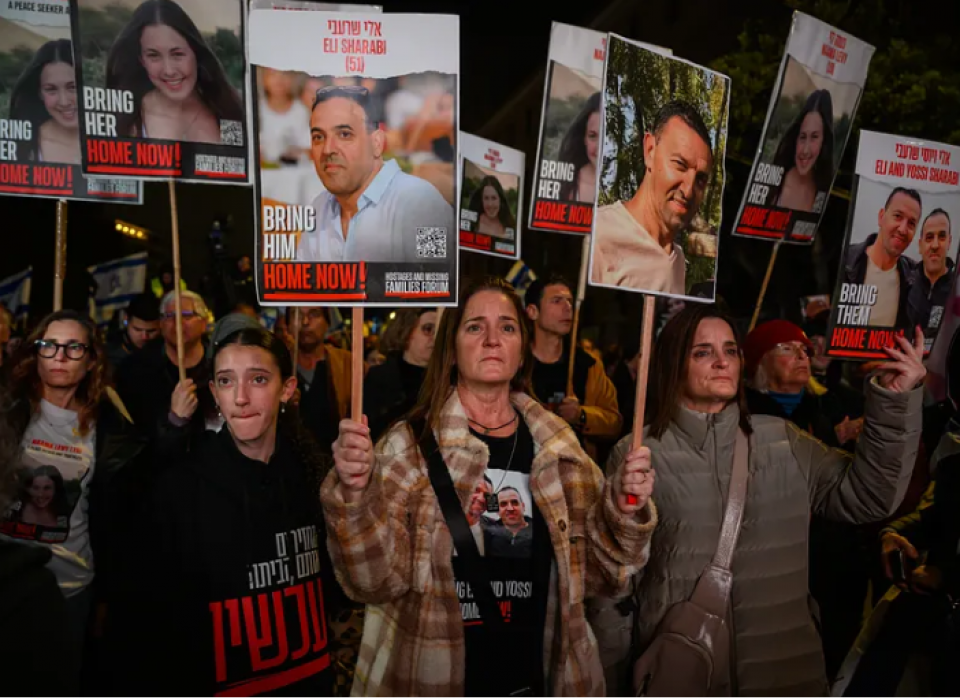
The families of hostages and their supporters participate in the 'United for the Release the Hostages' rally after a four-day march on Saturday in Jerusalem. / Photo by Alexi J. Rosenfeld/Getty Images.
Substack.com
5 March 2024
I loathe “dystopia,” commonly defined as an imaginary realm plagued by injustice, strife, and disaster. But we in the United States are living through an all-too-real dystopia, and not only in terms of the bleak presidential race that leaves so many Americans asking, in essence: “Is this all we got?”
The other reality is the increasingly clear prospect, horrifying as it may be, that there will be no relenting in Israel’s destruction of Gaza and its recasting of the West Bank as an Israeli-dominated suburb of Tel Aviv and Jerusalem.
The best America can offer, alongside our bombs and other weapons still flowing to Israel, are air-dropped military MREs (meals ready-to-eat), a president who babbles about an imminent ceasefire without applying sufficient pressure to make one happen, and a vice president who is sent out publicly to urge Hamas—not Israel—to agree to a six-week ceasefire in Gaza—fat chance.
Two Sundays ago, Israeli Prime Minister Benjamin Netanyahu went on CBS’s Face the Nation and dismissed out of hand any immediate chance of a settlement with Hamas. “Hamas started with just crazy demands,” he said of the number of Hamas prisoners to be released by Israel in return for the freeing of Israeli hostages. “I don’t think it makes any sense to have a public discussion of this . . . it’s too soon to say . . . if they’ve abandoned them and get into what you call the ballpark, they’re not even in the city. They’re on another planet.” The Israeli leader insisted: “Victory is within reach, and you can’t have victory until you eliminate Hamas.”
The American intelligence community has reason to believe, so I have been told, that it and Netanyahu know a great deal more than has been said publicly about the state of Hamas’s Israeli hostages—that is, those still believed to be alive, who are the central incentive for Israel to consider a ceasefire agreement. Thursday will mark five months of their captivity.
The talk of a renewed ceasefire agreement comes at a time, a well-informed American adviser told me, when the Israeli Defense Forces are working their way closer to Yahya Sinwar, the Hamas leader and mastermind of the October 7 attacks. Sinwar is holding out in a vast tunnel complex in southern Gaza. Killing Sinwar is now a priority for Netanyahu. The prime minister is in the unique position of being reviled by a majority of Israelis who nevertheless remain overwhelmingly supportive of his policy of eliminating the possibility of meaningful Palestinian control in Gaza and the West Bank.
Bibi and his colleagues running war policy, the adviser said, are “dedicated to protecting the Jewish people, whether in Israel or America or wherever. Protecting Jewishness is his highest objective. Israelis fight each other on all other issues except when they are threatened. Hamas violated a cardinal rule: ‘You cannot kill Jewish people.’
“There is no limit to that rule,” he said. “If Iran were to develop a nuclear weapon”—there is no evidence it has yet done so, the adviser quickly added—“Israel would use a nuclear weapon” to destroy Iran’s nuclear facility. “Everyone who has grown up in Israel knows such.
“Sinwar is said to be negotiating with the IDF,” the adviser said. “Do you think there will be a ceasefire? They may stop the shooting, but it will not be an end to the war. You don’t get the IDF soldiers willing to do what they do without being dedicated to the man. Jewishness is the highest objective. They all believe their very existence is at stake.”
In terms of assessing the chance of a significant agreement between Israel and Hamas, the best I can do is report that the American intelligence community and at least some in the White House have much more relevant and skeptical intelligence than is being relayed to the public. The American community has sufficient technical means, including satellites, to sweep up vast amounts of data and sort that data for relevance.
Decades ago, while writing a book, The Samson Option, on the Israeli bomb and how America helped turn Israel into a nuclear power, I was given an inside summary (posted in full below) entitled “How the U.S. Spies on Israel” by a source within the National Security Agency. I did not write about the material at the time for obvious security reasons, but the specific data in the summary, while relevant to what we do today, is no longer timely or classified.
The point of making this material public is not to interfere with Israel’s capability to spy electronically on others or with America’s ability to do the same and counter such capability—let those billion-dollar games continue—but to suggest just how much America knows today about the hostage situation inside the tunnels of Hamas.
The paper states: “Given the Israeli penchant for secrecy, it is questionable just how much we get from these intercepted communications, but certainly intercepted Israeli diplomatic communications [are] very helpful to U.S. policymakers in formulating policy toward Israel.”
The following paragraph discusses various American facilities involved in the intercepts, including several unmanned listening posts in the Eastern Mediterranean whose data was eventually relayed to the NSA headquarters in suburban Maryland. Joint NSA-CIA listening facilities, known as cells, were also tucked deep inside American embassies worldwide, including in Israel. Another important interception post was in Menwith Hill, a Royal Air Force base north of Leeds, in England, where Hebrew linguists monitored data picked up by satellite.
A further source of intercepts came via a long-standing reconnaissance program involving Air Force Rivet joint flights—modified Boeing 707 aircraft operating worldwide on behalf of the NSA. (One such flight was overhead in the Baltic Sea in case of a crisis in the fall of 2022 when a CIA team triggered a series of bombs that destroyed three of the four Nord Stream pipelines meant to relay cheap Russian gas to Germany.) The Rivet Joint flights were a primary source of tactical intelligence about Israel decades ago, but I do not know whether satellite collection programs have supplanted them. In their heyday, however, at least three such flights took place every week, and at greater frequency in times of crisis, flying from a base near Athens over Crete to the coasts of Libya and Egypt, collecting data in Arabic. As the plane neared Israel, according to the document I have, “the Arab linguists on board the aircraft leave their positions, and the Hebrew linguists take their place.” Typical targets of the linguists included “administrative communication for ground, air, and naval forces” of the Israeli armed forces.
The US Navy also played a significant role in intercepting Israeli communications. In times of crisis, the document notes that Navy SIGINT aircraft, known as “whales,” were flown to the Navy’s aircraft carriers in the Mediterranean. The Navy’s 6th Fleet, headquartered in Naples, Italy, was equipped with the most advanced NSA interception equipment and copied away when they made port in Haifa, Israel. Navy attack submarines, called “sturgeons,” were assigned to “prowl off the Israeli coast” in times of crisis, copying Israeli diplomatic and military traffic.
Of course, many specific interception techniques have been upgraded and made more efficient in the ability to spy. Still, the vast amount of Israeli signals and messages that can be intercepted, even if encoded, and put to tactical use surely has put some offices in America into specific knowledge about how many of the separated Israeli IDF male and female hostages are still alive. It is also known that the IDF leadership has gone to extreme means, in terms of risking lives, to collect real-time intelligence about the status of its prisoners inside the Hamas tunnel system.
The inevitable endgame in Gaza is coming. The Israeli leadership, defying the ongoing protests from the families of those taken on October 7, seems to be in no rush to negotiate a ceasefire deal, exchanging hostages for jailed Palestinians.
Why not?
DOCUMENT: HOW THE U.S. SPIES ON ISRAEL NOVEMBER 25, 1987
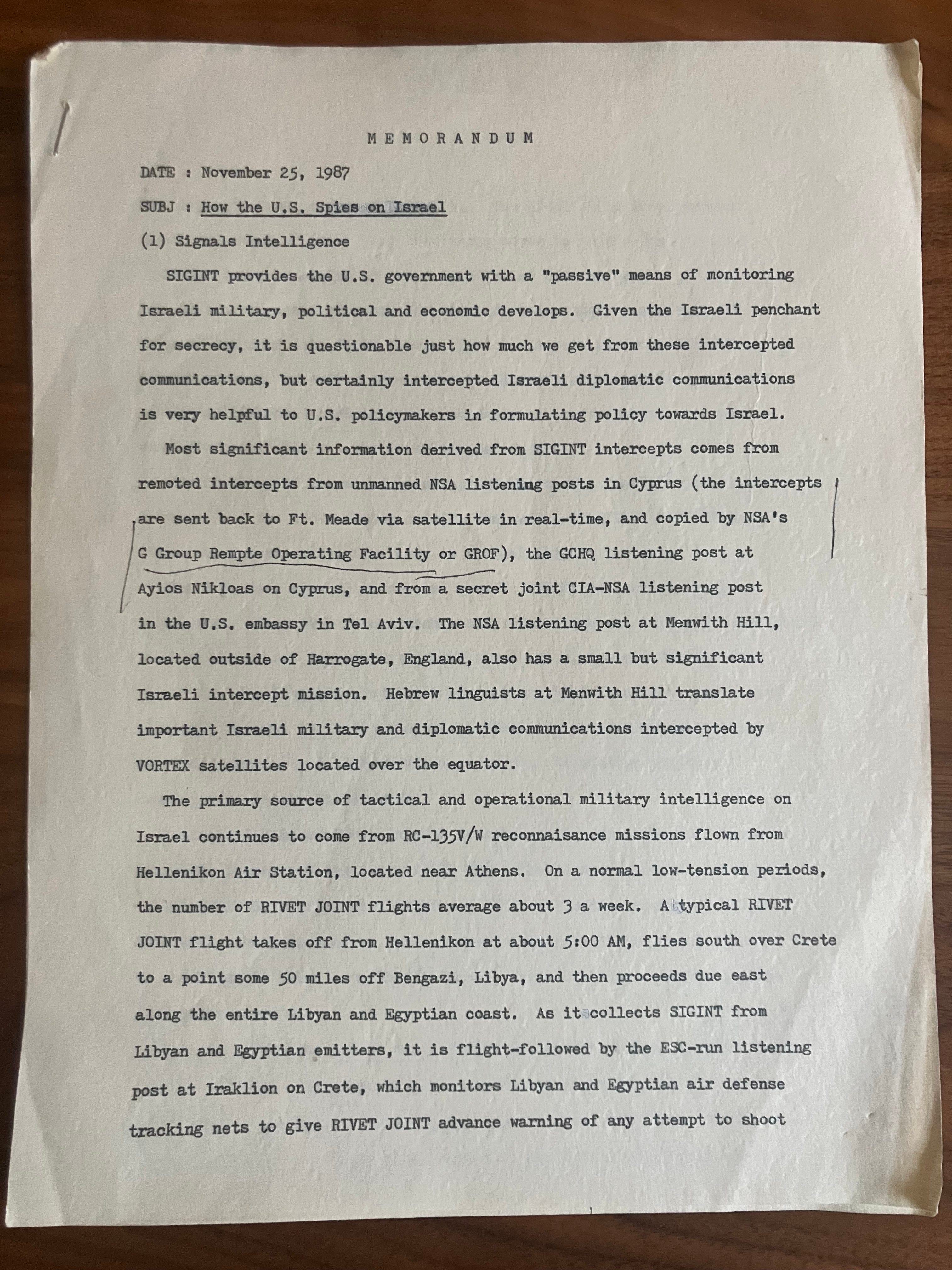
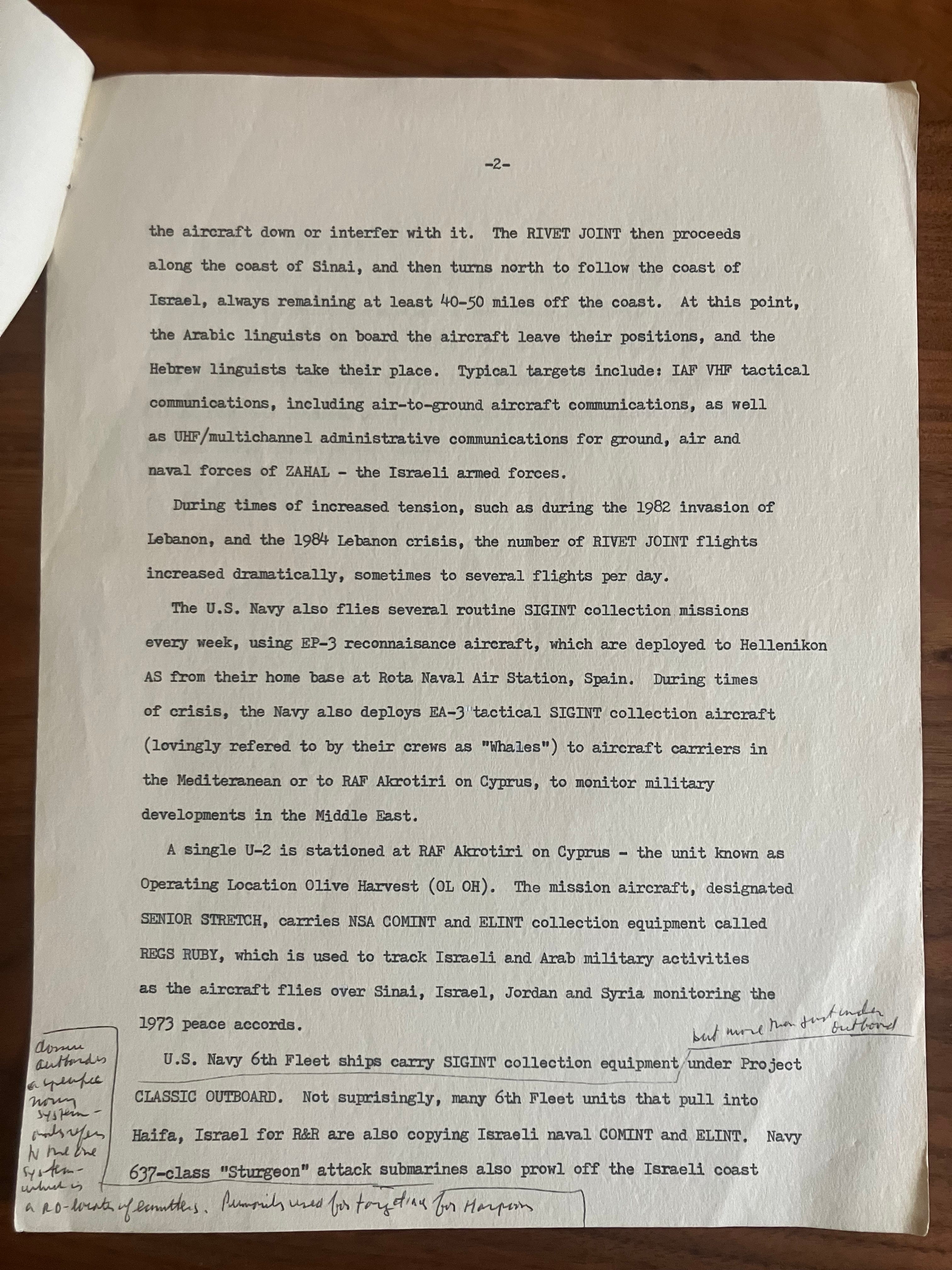
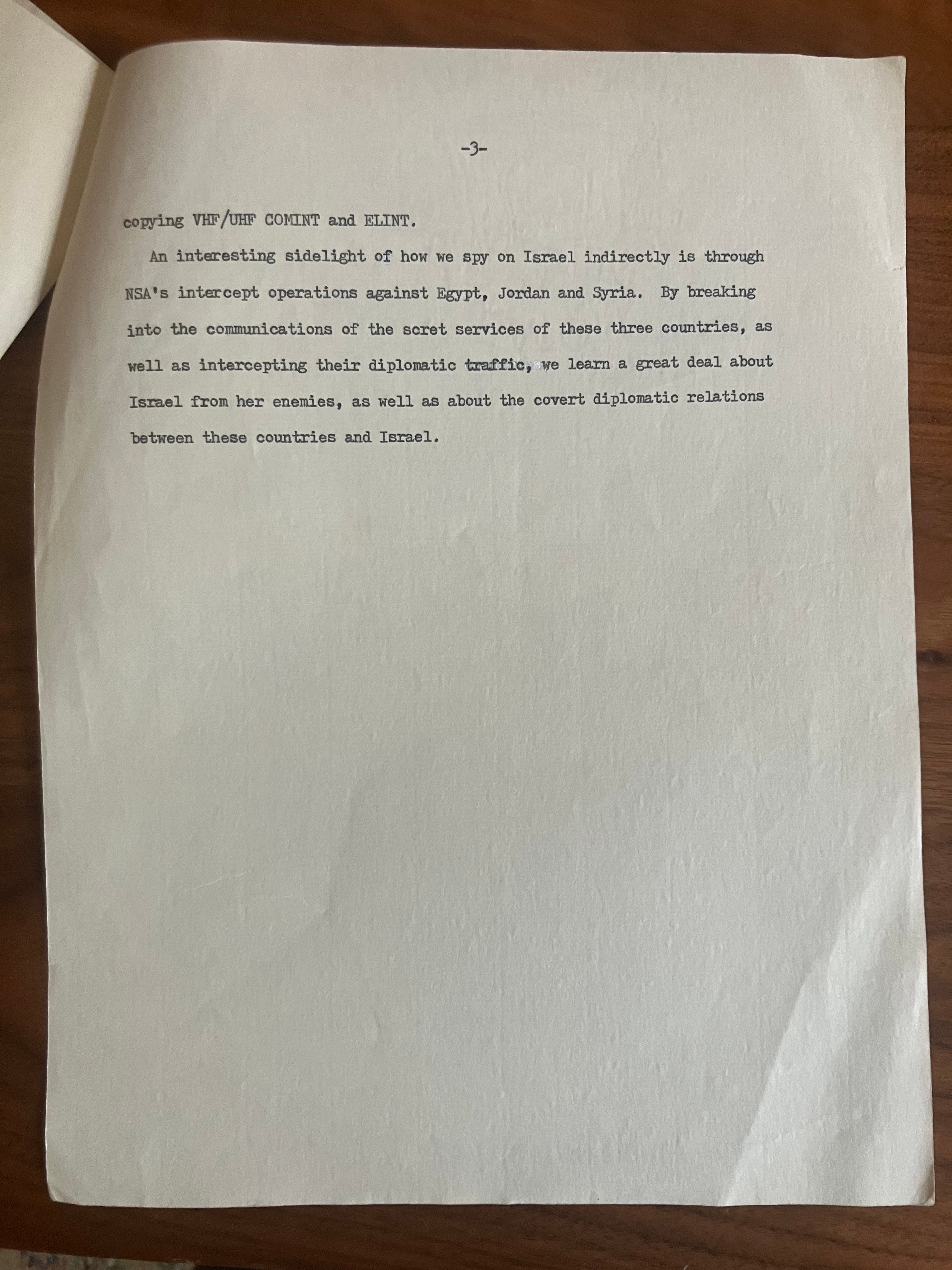
ANONYMOUS* GUEST EDITORIAL | PUTIN SAVES EUROPE FROM BIDEN
The enormous loss dealt by Ukraine is not its own doing. The US has pulled Kyiv’s marionette strings and pushed it into the war. The consequences of the Ukraine war and sanctions have been felt across Europe.
Its own petard has hoisted Europe. Its economy has gone for a toss. Its Euro currency has fallen to the lowest against the dollar in a decade. Europe’s inflation has skyrocketed to the highest in the last three to four decades. The gas embargo has put millions of European jobs in jeopardy.
The political crises in Italy, North Macedonia, and Britain have highlighted the upcoming “European spring.” Countries face the danger of their economy shrinking.
Europe has been oblivious to its worries until now despite all the signs that a recession is on the horizon. Europe is on the verge of de-industrialization because of the excessive oil, gas, and power prices.
German automaker Volkswagen AG and Danish jewelry business Pandora A/S announced U.S. expansions.
*Occasionally, I receive an anonymous editorial from presumably the same person worth publishing.
CIA, UKRAINE EXCHANGE PRE-DIVORCE PROPAGANDA
A New York Times exposé outs years of unsavory details about Ukraine's relationship with the CIA, while a Ukrainian spy chief swats down U.S. messaging. Is a breakup at hand?
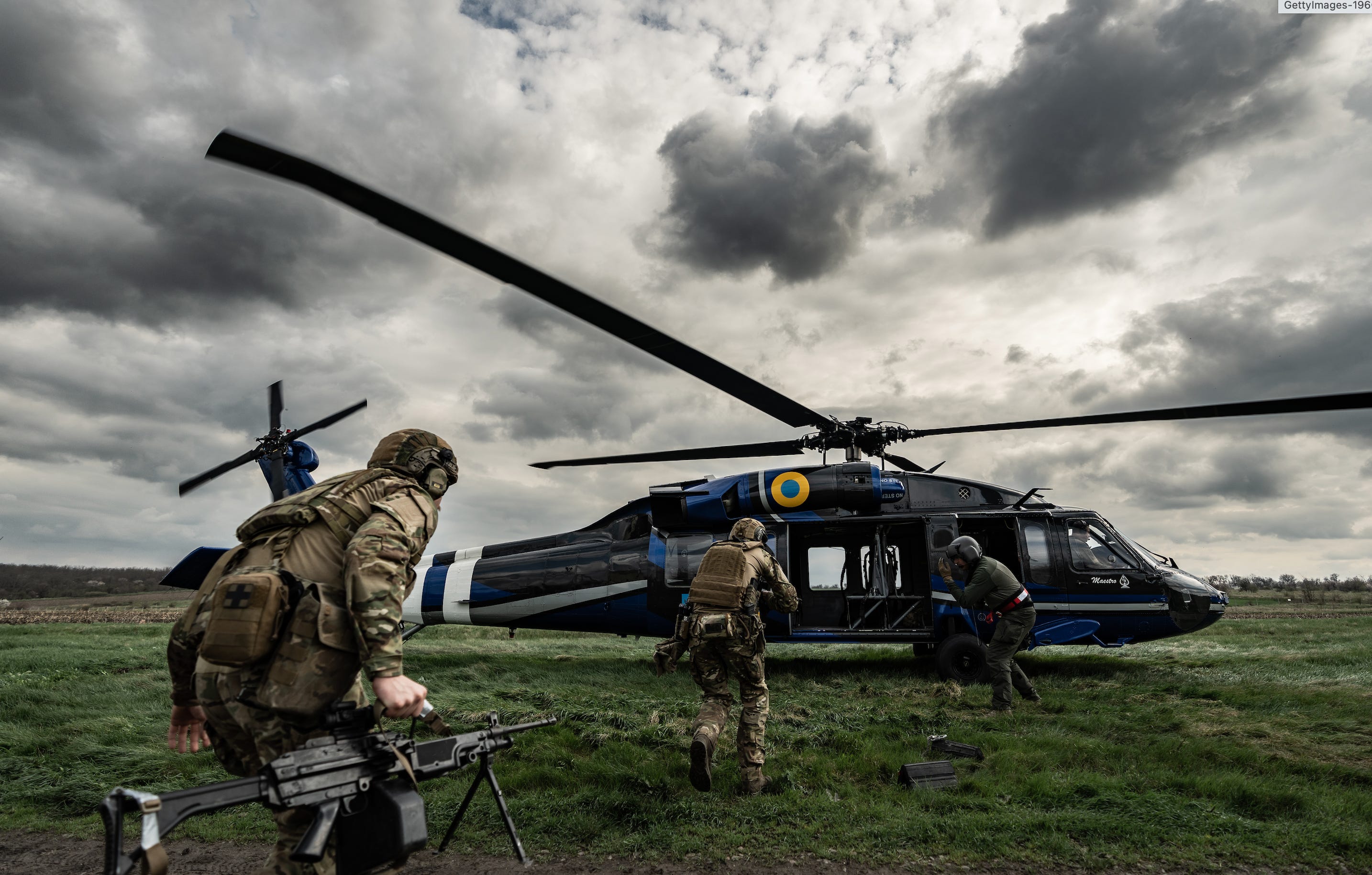
Members of Ukraine’s “Shaman” intelligence battalion board a Black Hawk helicopter
By Matt Taibbi
Substack.com
27 February 2024
Over the weekend, the New York Times published an epic exposé.
“The Spy War: How the C.I.A. Secretly Helps Ukraine Fight Putin,” by Adam Entous and Mitchell Schwartz, described a decade of CIA-Ukrainian cooperation, featuring details that would never reach public ears under normal circumstances. The opening is worth quoting at length:
Nestled in a dense forest, the Ukrainian military base appears abandoned and destroyed…But that is above ground. Not far away, a discreet passageway descends to an underground bunker where teams of Ukrainian soldiers track Russian spy satellites and eavesdrop on conversations between Russian commanders…
The listening post in the Ukrainian forest is part of a CIA-supported network of spy bases constructed in the past eight years, including 12 secret locations along the Russian border.
Yowza! Officials have long scolded the public that even minor disclosures of “sources and methods” could “risk lives” and must be prevented at all costs. Yet here comes the Times, helping “current and former officials in Ukraine, the United States, and Europe” blab a long list of extraordinary details, down to the number of CIA-supported secret bases along the Russian border. An abridged list of revelations:
CIA director William Burns made a “secret” visit to Ukraine last Thursday, his tenth since Russia’s invasion;
On the night of February 14, 2014, in the middle of the Maidan coup, Ukrainian spy chief Valentyn Nalyvaichenko called the heads of the CIA and Britain’s MI6 and asked for help in rebuilding his agency “from the ground up”;
Ukrainian intelligence officials, seeking to prove their value to American counterparts, handed the CIA proof that Russian separatists downed Malaysia Airlines Flight 17 “within hours of the crash” in July of 2014;
Then-head of Ukrainian military intelligence Valeriy Kondratiuk handed the CIA “detailed information about the latest Russian nuclear submarine designs” in 2015;
“Around” 2016, the CIA “began training an elite Ukrainian commando force” called “Unit 2245,” which “captured Russian drones and communications gear so that CIA technicians could reverse-engineer them and crack Moscow’s encryption systems”;
The CIA’s chief of station in Kyiv was nicknamed “Santa Claus”;
A Ukrainian agent “duped an officer from Russia’s military intelligence service” into providing intelligence that “allowed the C.I.A. to connect Russia’s government to the so-called Fancy Bear hacking group, which had been linked to election interference.”
Former CIA head John Brennan, who had been sitting for a month of interviews with Kitty Kelley, wouldn’t produce this many juicy reveals. They even recounted the CIA hauling Kondratiuk to a Washington Capitals game to boo Alex Ovechkin, for God’s sake. Are these spy agencies or people pitching a Netflix series?
When intelligence sources line up by the hundred to fill newspapers with “secret” details, they almost always do one of two things: spreading disinformation or “pre-bunking” embarrassing future revelations. The lavishly overwritten “secret untold story” that puts an advanced spin on ugly leaks has become a popular genre across this century’s many giant intelligence screwups.
For example, “Obama’s secret struggle to punish Russia for Putin’s election assault,” a 2017 Washington Post piece co-authored by the same reporter bylined in this Times piece, Adam Entous, told the cinematic tale of how Brennan hand-delivered to Barack Obama, an “intelligence bombshell” from a prized source “deep inside the Russian government.”
The heart-racing narrative revealed how the CIA not only learned of Vladimir Putin’s direct involvement in a campaign to “damage” Hillary Clinton and “help elect her opponent, Donald Trump,” but safely delivered the hush-hush news for the President’s eyes only (before telling the entire world about it of course).
In the wake of multiple disclosures since then suggesting Brennan’s conclusion was “cooked intelligence” and his supposed “longtime source” with access to the “highest level of the Kremlin” was anything but, the Post story, in retrospect, reads like a grand piece of inspired bullshit, designed to “pre-bunk” inevitable leaks about Brennan’s sourcing. It is the same with the absurdly vivid accounts in The Guardian and The New Yorker of the alleged British capture of suspicious “interactions” and “illicit communications” between Trump and Russia in 2015 that supposedly triggered the American collusion investigation. Those stories, too, now read like elaborate spin jobs put out to defuse future questions about the origins of that investigation.
In the case of this new Ukraine story, apart from the self-serving history re-writes (the idea that CIA-Ukraine cooperation started with a cold call on Valentine’s Day, 2014, is high comedy), specific details jump out. Although on the surface, the Times depicts a heroic partnership against Russian perfidy, it contains an un-subtle leitmotif about civilized America continually begging Ukrainians to lay off atrocities. As the partnership deepened “after 2016,” the Times reports, Ukrainians “began staging assassinations and other lethal operations, which violated the terms the White House thought the Ukrainians had agreed to.” Americans were “infuriated” and “threatened to cut off support,” but never did.
Shocked, shocked!
One scene depicts Brennan flying to Ukraine to lay down the “rules” of the partnership, forbidding Ukraine to engage in any operations that could “reasonably be expected” to have lethal consequences. In another place, Americans discuss drawing a line between intelligence operations and “things that go boom.” This “grated” on the Ukrainians, who (we’re told), without CIA permission, conducted an operation to plant explosives under a Russian airfield.
Future defense intelligence chief Kyrylo Budanov led a commando raid into Crimea that killed “several Russian fighters, including the son of a general,” a “disaster” that prompted a wigged-out Barack Obama to push for shutting the partnership down. Then-Vice President Biden was caught on tape saying to Ukraine’s president that the incident caused a “gigantic problem” and “making arguments here is a hell of a lot harder now.” Still, then-director Brennan talked Obama out of shutting down the operation, the Times wrote, because the union “was starting to produce intelligence on the Russians as the C.I.A. was investigating Russian election meddling.”
Similar stories are recounted about the assassination of separatist Arsen “Motorola” Pavlov, killed by a group that “the CIA soon learned” were members of a unit that had “received CIA training” (they learned of this!). The “assassinations continued” with the whacking of separatist Mikhail Tolstykh, which reportedly led to Russians car-bombing Ukrainian commando chief Colonel Maksim Shapoval. Then there was a story about a Ukrainian plan to send commandos into Russia to “plant explosive devices at train depots used by the Russian military” that sent violence-averse Americans into a panic:
When the station chief briefed his superiors, they “lost their minds,” one former official said. Mr. Brennan, the C.I.A. director, called General Kondratiuk to ensure the mission was canceled and that Ukraine abided by the red lines forbidding lethal operations.
The theme of Ukrainians free-lancing the bloody stuff (especially before the war) is prominent. Also noticeable: the bulk of the article’s detailed revelations come from the Brennan era, and Brennan is, to an almost humorous degree, the article's hero. He displays Atlas-like resolve, reining in Ukrainian savages on one side of the world while keeping the pusillanimous Obama from losing his nerve on the other.
Meanwhile, on the same day the Times piece came out, defense intelligence chief Budanov gave an extraordinary impromptu interview. Asked about the death of Russian opposition leader Alexei Navalny, Budanov said, “I may disappoint you, but we know he died from a blood clot. It’s more or less confirmed. This is not taken from the Internet.”
The comments were a missile up America’s messaging backside. Since February 16th, when Russia’s RIA-Novosti reported Navalny died in custody in Siberia, Americans lined up to call it murder. “Putin killed Navalny, let’s be crystal clear,” said former Ambassador to Russia Michael McFaul, echoing sentiments by the likes of David Axelrod and Zelig-like financier Bill Browder, who seems to be in the background of every Russia/Ukraine controversy.
Joe Biden announced 500 new sanctions, saying, “Make no mistake: Putin is responsible for Navalny’s death,” while Ukrainian President Volodymyr Zelensky was more direct: “It is obvious that Putin killed him.”
Not so fast, said Budanov, who also knocked down another Russia-panic story.
Last week, Reuters cited six sources in reporting that “Iran has provided Russia with a large number of powerful surface-to-surface ballistic missiles.” The tale was instantly converted to a talking point in the ongoing campaign to convince Congress of the urgency of passing a $61 billion aid bill for Ukraine by a Friday deadline. CNBC quoted an analyst saying Iranian weapons kept Russia fighting in Ukraine for “much longer than expected,” but “meanwhile, the future of U.S. military aid for Ukraine looks increasingly uncertain.”
Budankov responded to this by saying the Iranian missiles “are not here” and such information “does not correspond with reality.” He also contradicted statements about Russia deploying North Korean missiles, another recent American fixation. Just last week, “intelligence officials in Washington” told CNN they were “increasingly concerned” about “growing ties” between the two nations, pointing to the missiles while reiterating the need for more funding to combat this new Axis of Evil:
While Russia continues to be supplied by North Korea and Iran, the Biden administration has been unable to send new weaponry… because Congress has not approved the required supplemental funding.
Budanov shrugged this news off, too. “While a few North Korean missiles were utilized,” he said, “assertions of widespread use do not hold.”
It might be a coincidence that a Ukrainian intelligence official described in a New York Times article as a loose cannon who led a “disaster” of a commando raid just jammed three fingers in Washington’s eye in less than a week. Either way, Washington is anxious about the fallout from interrupting the US-Ukraine security project. Especially in an election year, any war of words between the erstwhile allies could get ugly in a heartbeat.
Times authors incidentally make no effort to support their sources’ assertions about alleged election meddling or the “Fancy Bear hacking group” tale.
These rehashed Russiagate narratives are conveniently emerging just as Biden’s national security adviser, Jake Sullivan, went on Meet the Press to warn again that Russia is “trying to interfere” in the 2024 election. (Russian meddling will eventually outstrip Saw X as America’s most exhaustively-mined sequel series.) “Experts” and “officials” told NBC that one scenario is a “‘hack and leak,’ such as the politically damaging theft of internal Democratic Party emails by Russian military intelligence operatives in 2016.”
In other words, we’re being warned about a possible leak of damaging accurate material we should patriotically ignore, like — taking one hypothetical — accusations that the CIA signed off on campaigns of assassinations and lethal operations in and around Russia dating back ten years.
One last note. When Russia invaded Ukraine in February 2022, academics like John Mearsheimer were blasted for saying the crisis was the West’s “fault” and for writing things like:
Since the mid-1990s, Russian leaders have adamantly opposed enlargement, and in recent years, they have made it clear that they would not stand by while their strategically important neighbor turned into a Western bastion.
Two years later, we’re hearing much the same thing from intelligence sources, who tell the Times of a clandestine partnership that involved secret border bases and “transformed Ukraine… into one of Washington’s most important intelligence partners against the Kremlin.” It doesn’t justify the invasion, but it does poke holes in initial hysteria against acknowledging the depth of the U.S.-Ukraine strategic partnership. We were told something different two years ago.
The Ukrainian people suffered terribly in the last two years, but if that $61 billion doesn’t pass, the priorities of America’s Ukraine hawks will shift quickly. There’s no time like ass-covering time in Washington, and the season may be upon us already.
EDITORIAL | NATO – THE BIRTH OF DEATH STAR
We are witnessing the birth of Death Star. If the European Union (EU), the United States, and Canada permit the North Atlantic Treaty Organization (NATO) to rule – command and control – autonomously, with no restraint – while waving the Banner of Holy Goodness – TAKE HEED!
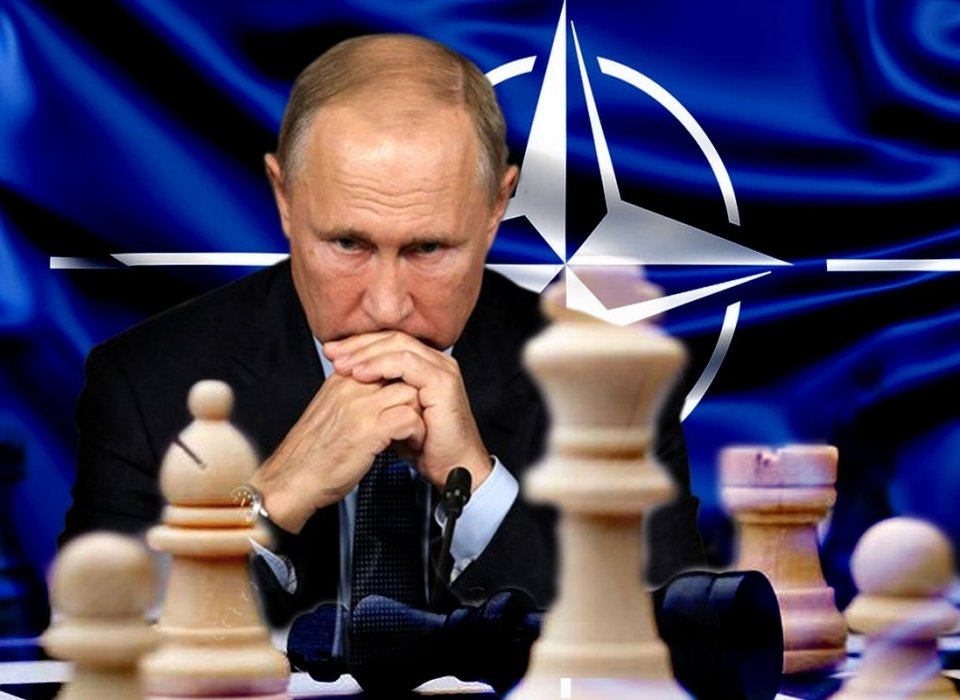
By Abraham A. van Kempen
Ohrid, Macedonia 27 May 2022 | Clouds of darkness plagued humanity throughout the 20th Century: endless wars, conflicts, mass murder, and 'ethnic cleansing’ causing indescribable suffering among millions of victims. The 20th Century leaves us a legacy of lessons (to be) learned. Above all, the previous Century warns us what not to do. Wars beget more wars because war feeds hatred and devalues human dignity and human rights.
NATO theoretically ensures the balance of power between East and West, but NATO tips the scales if it favors one over the other. In international relations, ‘Trust but verify’ makes sense. For six weeks, I’ve been trying to understand why the EU followed NATO and sidelined diplomatic efforts that eventually triggered Russia to exercise its “only option,’ according to President Vladimir Putin. Russa says that the West has forced them to invade and attack Ukraine.
_________________________
Editor’s Note | What if the EU-US/NATO Axis assured Russia that Ukraine would not be invited to become part of NATO? What if NATO hadn’t expanded aggressively toward Russia’s border? And what if the EU-US/NATO Axis encouraged Ukraine to work out their differences with Russia with neither help nor hindrance from the EU-US/NATO Axis? Why would Ukrainians alienate themselves from Mother Russia and vice-versa?
_________________________
The EU could have saved the day through diplomacy and soft power. Instead, the EU joined forces with NATO to rocket a regional conflict, a civil war, into a de-facto [it’s real, but not really] third-world war. Prompted by their diplomatic flops, the clowns in Brussels and their stooges in Washington now focus on damage control. How can these world leaders justify the high gasoline prices and the sudden increase of basic foodstuffs when they could have eased the tensions between the Ukrainian ‘nationalists’ in the West versus the Ukrainian ‘separatists’ in the East? Thanks to their subservience to NATO, the EU lost a golden opportunity to work things out with the Russian Federation.
Who’s happy? I cannot imagine anyone on earth pleased with the economic malaise caused by the diplomatic fiascos. If everyone realizes that the war should never have needed to happen, who wouldn’t want to reenact the hanging of Mussolini in 1945 on some of those Bozos? How will the world's people respond if this regional conflict, a tinder block, sparks into an uncontrollable wildfire between East and West, a nuclear holocaust?
What’s going on?
Why is the entire world community embroiled in a civil war between the people of Eastern Ukraine and Western Ukraine? The solution could be so simple. Consider a two-state solution. East Ukraine is predominantly Russian. Seventy percent of people in the Donbas Region are of Russian descent. In Crimea, the number is closer to 90 percent. Most Ukrainians in West Ukraine descend from various admixtures of central European stock with some Viking influence, notwithstanding that 15 percent of the people in West Ukraine, particularly in the metropolitan areas, are Russian. Another possibility is peaceful coexistence with two distinct regions, Eastern Ukraine and Western Ukraine, under one federation.
The Civil War in Ukraine started to brew immediately after the former Soviet Union granted Ukraine its independence. In the early 1990s, Ukrainians in the Donbas Region voted in a referendum to become part of Russia. Afflicted by declining industrial and agricultural productivity, hyperinflation (with an 80 percent inflation rate in December 1993 alone), growing unemployment, poverty, and shortages of fuel, consumer goods, and foodstuffs, Ukraine’s problems are compounded by regional divisions in economic and social characteristics. Western Ukraine is mainly agricultural, Ukrainian in ethnicity and language, and loyal to the nationalist ideal of an independent state. Eastern Ukraine is best characterized as Russian-speaking with a mixed ethnic composition and once an integral part of the Soviet industrial system. Many in the Donbas now consider it a time of relative prosperity. (Read more: ‘Political mobilization in eastern Ukraine: The referendum of 1994 in the Donetsk oblast.’)
In 1994, Four questions were put to the vote:
1. “Do you agree that the Constitution of Ukraine should establish Ukraine's federal territorial structure? ” [That is, “Do you support the federalization of Ukraine? ” – translator’s note]
The results in the Donetsk region:
“For” – 79.69%
“Against” – 15.02%
Invalid ballots – 5.29%
Excluding invalid ballots: for – 84.14%.
No results were found on this question in the Lugansk region [Wikipedia indicates that polls in the Lugansk region gave 75% “For” to this question – translator’s note].
2. “Do you agree that the Constitution of Ukraine should consolidate the functioning of Russian as the state language of Ukraine and the state Ukrainian language?
Results in the Donetsk region:
“For” – 87.16%
“Against” – 8.54%
Invalid ballots – 4.30%
Excluding invalid ballots: for – 91.08%.
Results in the Lugansk region:
“For – 90.38%
“Against” – 5.04%
Invalid ballots – 4.58%
Excluding invalid ballots: for – 94.72%.
3. “Do you agree that on the territory of Donetsk (Lugansk) region, the language of work, office work and documentation, and education and science should be Russian and Ukrainian?
Results in the Donetsk region:
“For” – 88.98%
“Against” – 6.86%
Invalid ballots – 4.15%
Excluding invalid ballots: for – 92.84%.
Results in the Lugansk region:
“For – 90.91%
“Against” – 4.51%
Invalid ballots – 4.58%
Excluding invalid ballots: for – 95.27%.
4. “Are you for signing the CIS Charter, for Ukraine’s full participation in the economic union, in the inter-parliamentary assembly of the CIS states?” (In 1994, it was synonymous with the Eurasian integration – editor).
Results in the Donetsk region:
“For” – 88.72%.
“Against” – 6.82%.
Invalid ballots – 4.45%
Excluding invalid ballots: for – 92.86%.
Results in the Lugansk region:
For – 90.74%
Against – 4.54%
Invalid ballots – 4.72%
Excluding invalid ballots: for – 95.24%.
Turnout was 72% in the Donetsk region and 75% in Lugansk.
The results are given according to the data of the Donbas newspaper dated 1 April 1994 (for the Donetsk region) and “Life of Lugansk” dated 2 April 1994 (for the Lugansk area).
It gets even more complicated. Feel free to delve into the details by visiting the following sites:
https://www.tandfonline.com/doi/abs/10.1080/10848779608579417?journalCode=cele20
https://www.bbc.com/news/world-europe-27360146
https://www.nato.int/acad/fellow/94-96/lupiy/01-02.htm
Let’s fast forward to today—what a mess. The EU could have advised Kyiv at least to establish two official languages: Ukrainian and Russian. In Belgium, the official languages are French and Flemish (Dutch); in Canada, English and French; in Switzerland, German, French, and Italian. And, though it’s unofficial, in Miami, you're lost if you don’t understand a bit of Spanish (with hand signals if necessary). Encouraging the Ukrainians to keep both mother tongues would have eased tensions. Instead, the Ukrainians were at each other’s throats. The EU subordinated to NATO to supply the Ukrainian nationalists with NATO firepower and hardware of mass destruction. Inevitably, some weaponry landed in the wrong hands. (See ‘Our Friday Edition | Part 5: Trust, but Verify … Who's Wise?’)
Both East and West within Ukraine ruthlessly slaughtered each other, as reported by Amnesty International. The Russian Federation slid in and invaded and then annexed Crimea. The extreme radical nationalists of the West, many of them flaunting their tattoos – swastikas – continued their crusade. Minsk (the Minsk Agreement of 2014 and 2015) had no influence. The fighting continued, often clandestinely. In the meantime, NATO expanded its sphere of influence. See ‘Let’s Gang Up on Putin.’
Notice the countries and the dates significantly when NATO added the newly recruited countries into its fold. All but two countries became part of NATO before the Russian Federation annexed Crimea in 2014. After the Russian Federation annexed Crimea, only Macedonia (2020) and Montenegro (2017) became part of NATO. Also, the countries below were former Soviet Satellites. Soon after the Soviet empire collapsed, Russia granted them irrevocable independence. NATO became redundant; there was no need to target NATO’s nuclear arsenal from the original NATO countries to Russia. Russia had no interest in expanding its lebensraum. Yet NATO expanded into 16 additional countries. They were sold a bill of goods. Join a unified defense mechanism against whom? Martians?
But here’s the deal, “if you want to become an EU member state, you must become part of NATO.” It’s the unwritten rule, the unspoken understanding:
1. Croatia (2009)
2. Hungary (1999)
3. Czech Republic (1999)
4. Estonia (2004)
5. Albania (2009)
6. Bulgaria (2004)
7. Montenegro (2017)
8. Latvia (2004)
9. Lithuania (2004)
10. North Macedonia (2020)
11. Poland (1999)
12. Slovakia (2004)
13. Slovenia (2004)
14. Romania (2004)
NATO is primarily a $trillion money machine. In Part 8 of Who’s Wise, we will learn more about NATO's money game.
Also, what’s up with Turkey vis-à-vis Sweden? Hint! Turkey, a NATO country, has been denied EU membership. Erdogan is not happy. Until the EU accepts Turkey as a bonafide EU member state, Turkey will deny Sweden’s application to become part of NATO. How long will that take? Long! Will it make a difference? No!
Let’s fast forward from 24 February 2022 to today. How secure can a nation feel if 30 countries not far from its border point nuclear weapons into the inner sanctum of its existence, its front yard? I’m all for ‘balance of power’ as long as the powers are balanced. NATO violates that principle. With 28 European countries plus the United States and Canada perpetually hovering over the Russian Federation, with super sharp cameras spying on all of Russia, why shouldn’t Russia not demand full access to the Black Sea? Someday, they might need a fleet of supertankers to supply the world with oil and gas and safflower oil and wheat. NATO’s actions reinforce the fears that the Russian Federation cannot trust the EU, the US, and Canada, also known as the World Community, the Free World.
Instead of pursuing a cooperative relationship, buying and selling from each other, and enriching one another, we are witnessing the birth of Death Star, the dark side of NATO. More about this next week. Hint! You reap what you sow.
Finally,
“We saw all this military infrastructure being set up. We saw hundreds of foreign advisors beginning to work and the regular deliveries of the most modern weaponry from NATO countries. The danger grew with each passing day. So, Russia launched a preemptive attack against this aggression. It was necessary, timely, and the only choice—the decision of a sovereign, strong, independent country.” (See ‘President Putin’s Victory Day Speech.’)
How will the horror end? At another Yalta?
The Russian Federation will come to the negotiating table only after it has annexed the East of Ukraine. From its vantage point, the tug-of-war of giving and taking begins. Russia will never again give up Crimea or Donbas. Everything else is negotiable. Thank you, EU. Thank you, NATO. Let’s meet in Yalta along the Crimean Peninsula.
Read more: ‘How Does It End? Fissures Emerge Over What Constitutes Victory in Ukraine,’ New York Times, 26 May 2022.
BUILDING THE BRIDGE! | A WAY TO GETTING TO KNOW THE OTHER AND ONE ANOTHER
Making a Difference – The Means, Methods, and Mechanism for Many to Move Mountains
.jpg)
Photo Credit: Abraham A. van Kempen, our home away from home on the Dead Sea
By Abraham A. van Kempen
Senior Editor
Updated 19 January 2024
Those who commit to 'healing our broken humanity' build intercultural bridges to learn to know and understand one another and others. Readers who thumb through the Building the Bridge (BTB) pages are not mindless sheep following other mindless sheep. They THINK. They want to be at the forefront of making a difference. They're in search of the bigger picture to expand their horizons. They don't need BTB or anyone else to confirm their biases.
Making a Difference – The Means, Methods, and Mechanism for Many to Move Mountains
Accurate knowledge promotes understanding, dispels prejudice, and awakens the desire to learn more. Words have an extraordinary power to bring people together, divide them, forge bonds of friendship, or provoke hostility. Modern technology offers unprecedented possibilities for good, fostering harmony and reconciliation. Yet its misuse can do untold harm, leading to misunderstanding, prejudice, and conflict.
A Free Trial for Life – SUBSCRIBE NOW!
• It's quick and straightforward.
• We won’t ask for your credit card number.
• Just enter your e-mail address to receive your complimentary free-for-life subscription to our newsletter.
• Please include your First and Last Name.
• We won’t share or sell your e-mail address.
_________________________
Related Articles Recently Posted on www.buildingthebridgefoundation.com:
_________________________
The views expressed are solely those of the author and may or may not reflect those of the Building the Bridge Foundation
LATEST OPEN LETTERS
-
21-07Freedom
-
20-03Stand up to Trump
-
18-02Average Americans Response
-
23-12Tens of thousands of dead children.......this must stop
-
05-06A Call to Action: Uniting for a Lasting Peace in the Holy Land
-
28-05Concerned world citizen
-
13-02World Peace
-
05-12My scream to the world
-
16-11To Syria and Bashar al-Assad
-
16-11To Palestine
VIRTUAL POST OFFICE
PETITIONS
LINKS
DONATION
Latest Blog Articles
-
25-12Our Friday News Analysis | What the World Reads Now!
-
24-12Our Wednesday News Analysis | Why Palestinians face the same fate, weapons or not
-
23-12Why Palestinians face the same fate, weapons or not
-
23-12Western elites fear a ‘globalised intifada’ because they are its targets, not Jews
-
23-12A smaller cage: Israel’s ‘two-state solution’ on Gaza’s ruins
-
22-12The Evangelical Pope | A Humane Future Before God
-
17-12Our Wednesday News Analysis | Gaza and the unravelling of a world order built on power
-
16-12Gaza and the unravelling of a world order built on power
-
16-12US plan in Gaza: forced ghettoisation, annexation, mass detention, resource plunder
-
16-12Von der Leyen and Blair still want to boss Palestinians around
-
15-12The Evangelical Pope | The Universal Value of Life
Latest Comments
 One of the most important and illuminating articles that I …
One of the most important and illuminating articles that I …
Comment by Benjamin Inbaraj And what's wrong here?
After all, there is the homeland …
And what's wrong here?
After all, there is the homeland …
Comment by Isac Boian Does this reinforce or deny my argument that Israel is …
Does this reinforce or deny my argument that Israel is …
Comment by Edward Campbell Many 'say' they support the Palestinian cause but do little …
Many 'say' they support the Palestinian cause but do little …
Comment by Philip McFedries The UN is strangled by the "war for profit" cabal …
The UN is strangled by the "war for profit" cabal …
Comment by Philip McFedries I can't read the printing on the map.
I can't read the printing on the map.
Comment by Philip McFedries Good news!
Good news!
Comment by Philip McFedries

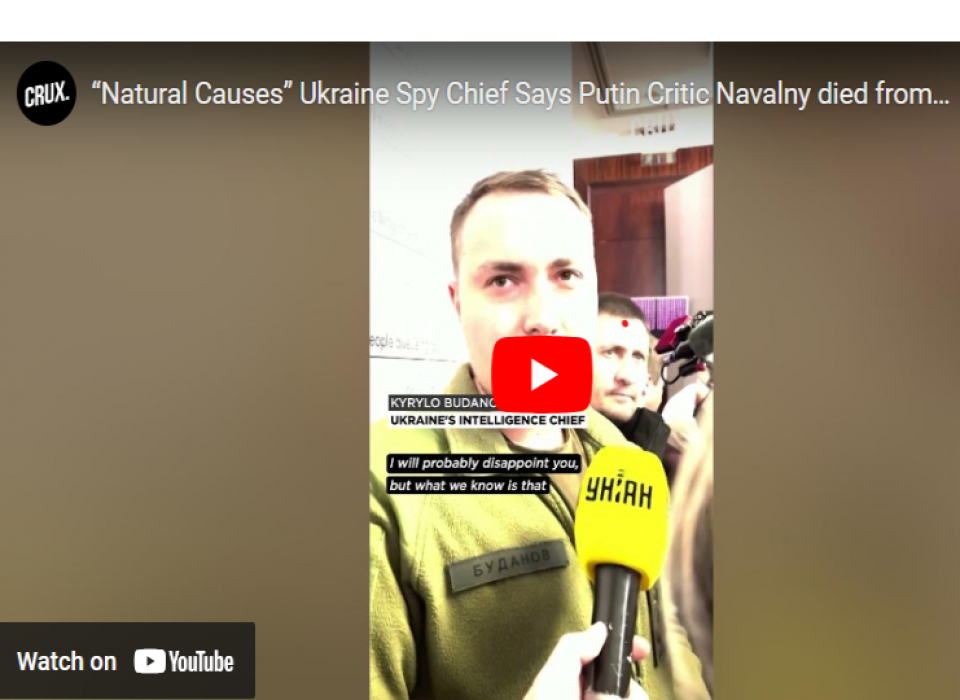


COMMENTS
This article has 0 comments at this time. We invoke you to participate the discussion and leave your comment below. Share your opinion and let the world know.